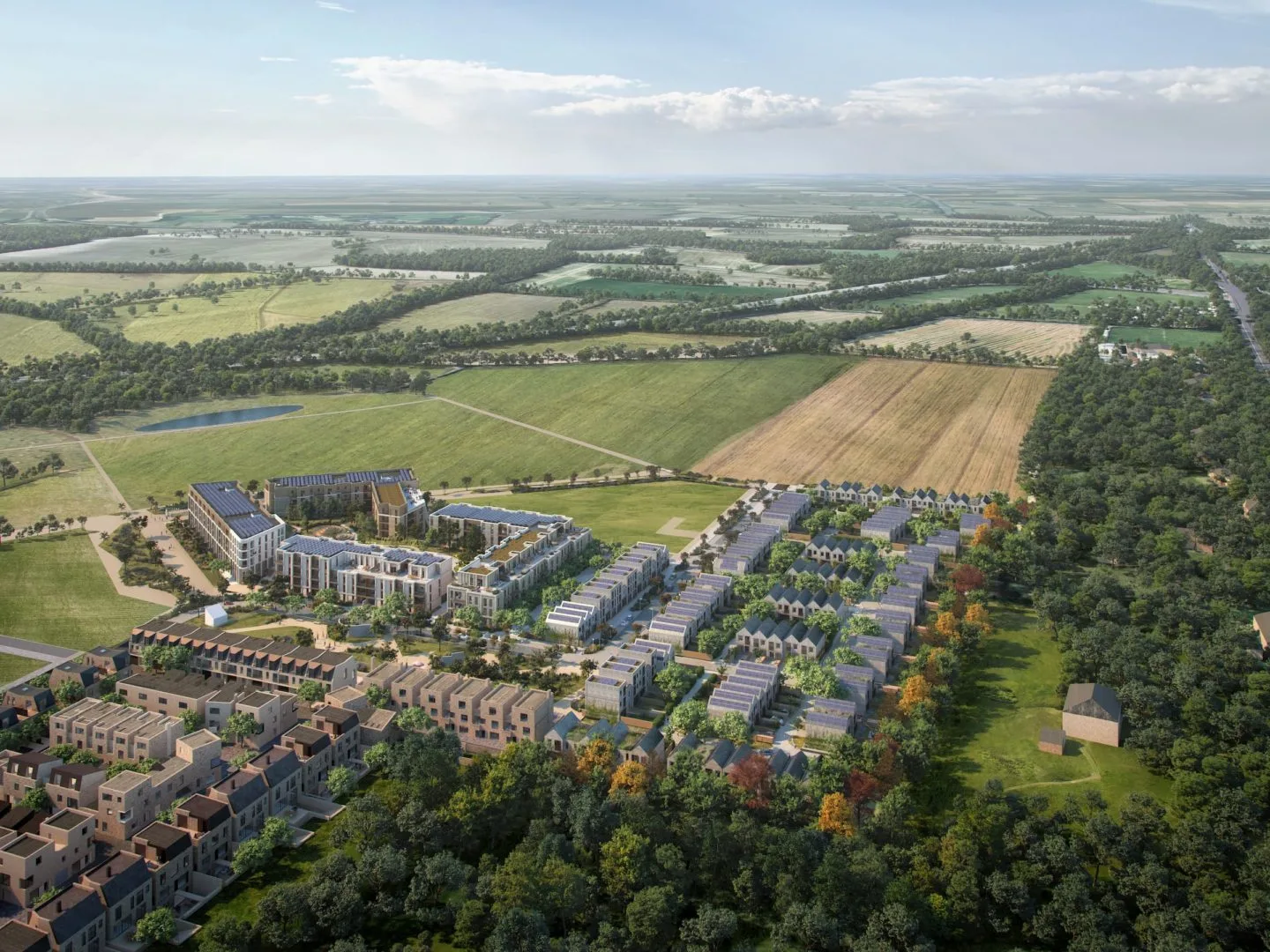Labour’s Green Belt Reforms
Amidst the Governments proposed Green Belt Reforms, we look at one of the most prominent communities already shaping a green belt landscape – Eddington, North West Cambridge.
Just three weeks after being elected to power, the new Labour government issued draft changes to the National Planning Policy Framework (NPPF) – with the most notable amendments to the green belt. Open, undeveloped land, encircling our towns and cities, the green belt has long been seen as a popular planning policy, setting geographical areas not to be touched.
Successfully challenging this well-established and widely recognised planning policy will not be easy. It will be crucial to bring Local Authorities, and their communities on the journey to identify and redesignate land – imposing the definitions without consultation will likely cause more challenges and delays down the line.
But successful new communities have been conceived and created in these rings of green long before ‘grey belt’ was proposed as policy. To ensure the implementation of the new policy is as smooth as possible, we should review the lessons learned in existing examples.
One of the most prominent examples of a change to the green belt over the last twenty years is at Eddington in North West Cambridge. Back in 2008 the green belt boundary to the City of Cambridge was revised following extensive consultation, releasing 150ha of land wholly owned by the University of Cambridge. The North West Cambridge Development was created, centred around a mixed academic and urban community: a place that is sustainable, long lasting and ambitious – offering a high quality of life to enhance both the City and the University. Key to unlocking the vision was the close involvement of local stakeholders.
Brian Nearney, Commercial Director from the University of Cambridge, commented: “Eddington sets the standard in sustainable living. Unprecedented in its ambition and scale, Eddington is part of the University’s plans to safeguard its future as a world-leading university by providing key workers, students and the wider community with a vibrant place to live.”

The masterplan at Eddington includes over 3,000 homes, 2,000 student bed spaces, 100,000sqm of new employment floorspace, over 5,000sqm of retail floor space. In addition, there is space for senior living, a hotel and social infrastructure being created, where 50% of the land is accessible open space with enhanced biodiversity.
The vision is to create a new community focused on spaces that are active and inclusive – two components that will be key in achieving successful, forward thinking new communities in these previously designated green belt spaces.
Occupying key locations in the masterplan, and connected by the cycle superhighway, The Ridgeway, Plot S1 and S2 are central to achieving this vision. Gaining planning permission in 2022 for 370 homes, Jo Cowen Architects worked closely with Present Made and the University of Cambridge to help realise the vision for these plots and a scheme that is centred on designing for people. They create an intergenerational neighbourhood, where affordability encourages diversity, and where the public realm and the notion of time well-sent are central to the masterplan.
Plots S1 and S2 encourage social interaction through public spaces, formal green spaces, as well as meandering, accessible verdant streets. Allotments, edible landscapes, and grow gardens promote home grown produce to residents, offering fresh food on the doorstep. Priority is given to pedestrians and cyclists, reinforcing the aim to build a community with active travel links to the city centre and local railway stations. This ensures the new community connects with and provides benefits to the existing community – driving success and buy-in from local stakeholders.
By opening up less than 0.5% of the green belt surrounding the city, Eddington has shown us it is possible to change boundaries sensitively, working with the landscape and local communities to create affordable housing for a growing population, retain talent close to employment, with proximity and good connections to the city.
Eddington stands as proof that with balanced, sustainable growth, we can reshape the green belt to meet modern needs and offers a successful blueprint for future growth to our towns and cities.
